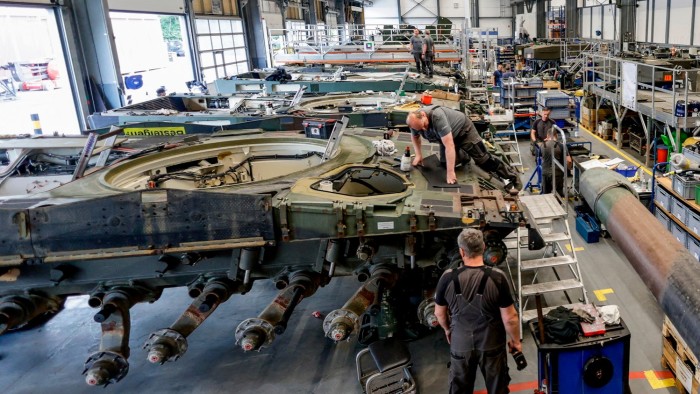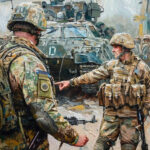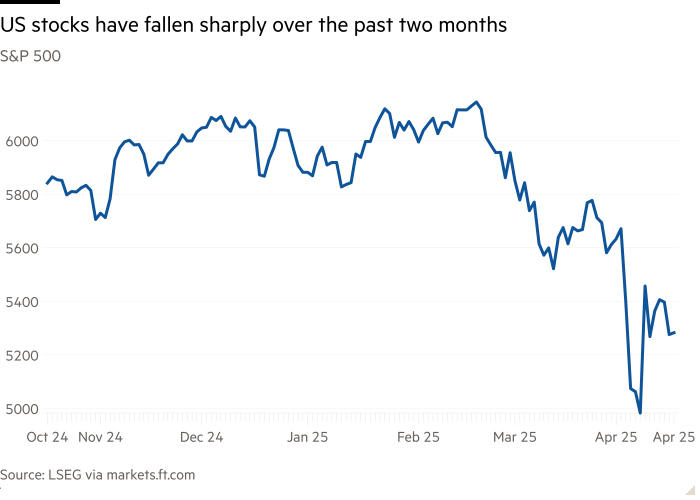Europe, stronger together

There has been an astonishing acceleration in the way European policymakers are engaging with the need to scale up defence procurement. How to pay for rearmament will be discussed by EU heads of state and government at the European Council next week. It is also likely to feature at the informal Economic and Financial Council in April. Poland, which currently holds the rotating presidency of the EU Council, is pushing hard to make progress on committing funding to rearmament.
So a lot of attention is being paid, in and out of governments, to the funding questions I discussed in last week’s Free Lunch. This is overdue, but all the more welcome for that. In addition, of course, there are defence and military policy discussions going on about what capabilities to grow, what kit to buy, how to co-operate operationally and so on. A big question is how well policymakers manage to link up the economic and military discussion — how well, so to speak, finance and defence ministers manage to work together.
Even inside the EU, most of the heavy lifting will probably be done by national governments — hence the importance of Germany’s Damascene conversion in favour of borrowing to invest enough in projects of vital national interest (see “Other readables” below). But there are serious questions to ask about how Europe can co-ordinate its collective financial firepower — to give an incentive for greater national spending commitments, to encourage more co-ordination in procurement itself to overcome inefficient duplication and incompatibility, and, finally, to better help Ukraine.
This is essentially a question of how European countries can overcome a big collective action problem — where they have obvious common interests but where national decision-making does not fully take into account the benefit or cost of particular national decisions on allies. One solution lies in finding a common funding structure for such priorities.
There are a number of schemes being proposed, by analysts outside of governments, that are separate from the EU’s €150bn common borrowing project tabled by the European Commission last week. Here are three that have caught my eye.
In a new policy brief, Daniel Gros at Bocconi University’s Institute for European Policymaking highlights the effectiveness of the European Financial Stability Facility in the Eurozone debt crisis. The EFSF was a special purpose vehicle (SPV) to borrow in markets against guarantees from willing EU member states and to on-pass loans to countries experiencing balance of payments crisis.
It was an extremely lean structure — essentially a funnel to pool and co-ordinate fiscal rescue loans. Gros points out that it was proposed in May 2010, created by July, and started lending later that summer. It had financial firepower of €780bn thanks to state guarantees exceeding 8 per cent of the members’ GDP. Because countries such as the UK did not want to take part in rescue loans it saw as the Eurozone’s business (except in Ireland, which it supported bilaterally), the EFSF was set up by intergovernmental agreement rather than within EU structures.
Gros proposes that the same type of construction be set up for a “European security fund” whose role would be to raise loans to Ukraine to substitute for disappearing US aid. A coalition of willing countries friendly to Kyiv, including the UK and Norway, could with guarantees of 5 per cent of a single year’s GDP (less than for the EFSF) borrow as much as €1tn at low cost. Much of the money would be spent on buying weapons, of course. A very similar proposal, also based on the EFSF, was made independently this week at a closed gathering of UK, Nordic and Baltic policymakers.
What both proposals have in common is that the intergovernmental structure allows the UK and Norway to take part and potential spoilers to be excluded. Both designs are extremely lean — little more than SPVs which would give the involved finance and defence ministers a quick-to-use tool to channel money to Ukraine. Both mention the possibility of using Russia’s blocked foreign exchange reserves to service some of the loans to Ukraine.
Both also suggest that, beyond Ukraine, such a fund could in time also finance the participating coalition’s own defence expenditures. I see no reason why a fund could not be set up to serve both purposes right away: support Ukraine and help with re-arming the coalition countries themselves. The objective is the same — the defence of Europe — and so would be the political decision makers.
A third proposal that is circulating — including in a letter to the editor of the FT — is for a rearmament bank. This proposal, which originates in the UK but has been cautiously namechecked by the Polish prime minister, would be an institution on the model of the other multilateral development banks such as the European Investment Bank and the European Bank for Reconstruction and Development. When all these proposals are fully formulated and put on the table, the question that has to be addressed is what a bank — a bigger institutional undertaking — is needed for that a mere SPV — which is much leaner and quicker — cannot do. One suggestion is that a bank would also lend to private industry. But as long as governments choose to commit serious spending to long-term contracts — the bigger issue to ensure — I struggle to see arms companies failing to get whatever finance they need on the back of such order books. The goal for either a fund or a bank is to enable national governments to commit to large enough multiyear orders so industry has confidence to expand capacity. If they do, everything else follows.
These ideas are about how to be clever about the way of raising money. But we should also think of how to be clever about the way we spend it. So here are two blue-sky thoughts of my own on making the most of the coming European rearmament effort.
First, there is a lot of unexplored opportunity in the industrial policy aspect of defence spending. The spin-offs from defence-related spending programmes in the US are legendary — from the internet to microwaves. Those tasked with spending the hundreds of billions about to be added to European defence budgets should look kindly on projects for technological innovation with commercialised spin-offs.
It’s important to be clear that a lack of particular military capability is not an inability to acquire that capability. It is clear that Europeans lack certain capabilities at the moment, relying on the US to provide them, and depending on US components and services for even some of the kit they do have to work. But, as Sander Tordoir writes in an essay for Foreign Policy, Europe’s traditional manufacturing strengths are well suited for rearmament. It’s a continent of rich, technologically advanced and highly educated countries. There is no reason why it should not be able to produce all the hardware the US does — so long as it spends the money and puts in the orders. There is an element of “just do it” to the capability challenge.
There is one area, however, where Europe is relatively weak even in terms of its ability to acquire capabilities. That is software. It has now been well established that much of the EU’s productivity, research and innovation gap with the US is in the tech sector, and specifically software. Autonomous defence capability will suffer until this is addressed, even if hardware manufacturing is more a matter of putting in the orders so weapons makers have the confidence to scale up.
It makes sense, then, to use defence procurement money to create a strong software development ecosystem in Europe. Creating a big enough sector, attracting programmers (back) from Silicon Valley, and putting in enough and valuable enough orders for entrepreneurs to throw themselves at the technical challenges — these should be high-priority goals. They would at the same time help address Europe’s underperformance in tech more generally.
My second thought has to do with the UK. As one of the Old World’s pre-eminent military powers, both in terms of capacity and willingness to use it, it is incontrovertible that the UK must be as integrated in Europe’s rearmament effort as possible. Now, the UK has not made things easier for itself (or others) by leaving the EU and by holding on to rigid fiscal rules that make little sense economically and less sense geostrategically (as mentioned, even Germany has seen the light). Brexit has put barriers into cross-border European supply chains; this will be a problem for building or boosting such supply chains in defence, too.
But there is strong political interest in making defence-industrial co-operation between the UK and the rest of Europe work as smoothly as possible. One conclusion people have drawn from this is that defence should be isolated from other parts of the UK-EU relationship so as not to be contaminated by the more general “Brexit reset” conundrum.
That’s a fine thought when it comes to operational co-operation — preparing to actually fight together should not be troubled by Brexit legacies. But rearmament is essentially an industrial and economic challenge — the nature of which is unavoidably bound up with the hard form of Brexit chosen by the then UK government.
That was not the only alternative. The current discussions of how to involve the UK have reminded me of the doomed attempt by Theresa May to propose a sectoral single market — a subset of the economy (only goods, perhaps, or not even all goods) — where the UK would have frictionless market access in return for aligning dynamically with EU rules and jurisdiction. The idea fell flat with EU leaders, who rejected it in the name of a supposed indivisibility of the “four freedoms” (of movement of goods, services, capital and people).
But could the desperate need for urgent and efficient rearmament be enough of a motivation to revisit this? Could one envisage a partial but frictionless common market for defence goods and services, defence-related investments and movement of defence industry personnel? There would be technical problems, for sure: how to delineate “the” defence sector, and how to ensure friction-free economic movements in practice. (Special customs lanes? Special passport stamps?) But if the political obstacles were overcome, technical solutions could be found. So the question is whether the current security situation is desperate enough to make the UK willing to accept some EU jurisdiction in this delineated area, and make the EU willing to give up its single market purism. And if so, it would be an excellent foundation on which to build a UK-EU reset that was not in name only.







